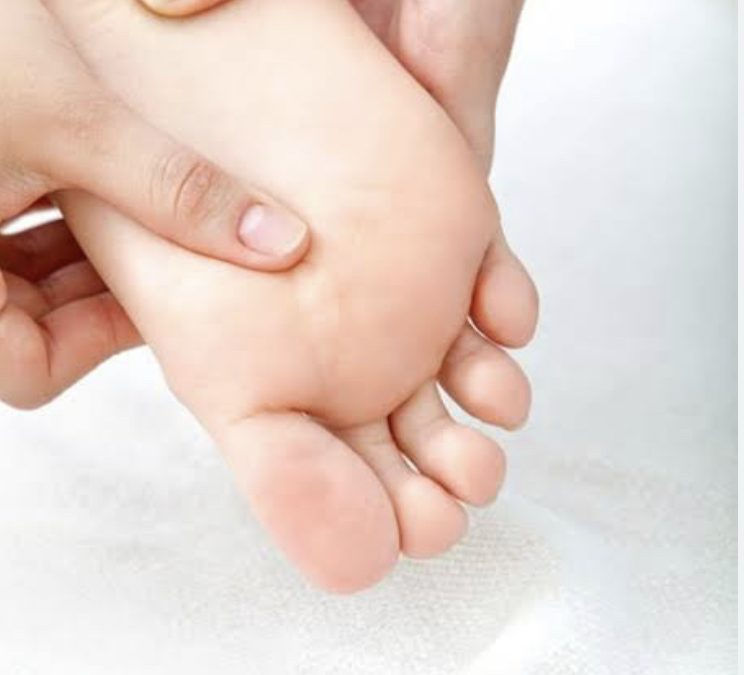Natural Treatment for Hammertoes: What You Need to Know
- Dr. Angela Walk

- Jun 22
- 3 min read
Updated: Jun 25

Hammertoes are a common but often misunderstood condition that can cause pain, joint stiffness, and deformity of the lesser toes—especially the second toe.
While surgery is sometimes recommended, most flexible hammertoes respond well to conservative, natural treatment when addressed early.
In this post, we’ll explore:
What causes hammertoes
Common signs and symptoms
Why footwear plays a major role
The best natural remedies to restore comfort and function
What Is a Hammertoe?
A hammertoe is a type of crooked or contractured toe where the proximal interphalangeal (PIP) joint bends upward, and the tip of the toe points downward. Over time, this altered position becomes fixed, making the joint appear “hammered.”
Hammertoes can be:
Flexible: still reducible with manual pressure
Rigid: fixed and no longer mobile due to joint changes or long-standing contracture
What Causes Hammertoes?
Hammertoes are primarily caused by a muscular imbalance between:
The long extensor tendons (across the top of the foot)
The intrinsic foot muscles and flexor tendons (along the bottom of the foot)
When these opposing muscle groups are out of balance—often from years of wearing conventional footwear—the toes are pulled upward and inward into a distorted position.
Major contributing factors:
Tight, narrow toe boxes that squeeze toes together
Elevated heels, which push weight forward and lift the toes
Toe spring in shoes, which forces the toes upward
Shoes that are too short, causing the toes to curl to fit
Over time, these abnormal positions become permanent as tendons and ligaments adapt and shorten.
Are Hammertoes Genetic?
While hammertoes are not directly inherited, there can be a genetic predisposition to flexible connective tissue or toe deformities.
Individuals with more elastic or easily contractured tendons may be more susceptible—but the root cause is still environmental (mainly footwear).
Common Signs & Symptoms
Whether flexible or rigid, hammertoes can cause a range of painful symptoms:
Pain and inflammation at the top of the bent toe (from shoe pressure)
Pain at the base of the toe (metatarsophalangeal joint)
Corns or calluses on the top of the toe from rubbing
Redness and swelling over the joint
Nerve-like symptoms—burning, stinging, or numbness
Feeling like you're “walking on a stone”
Decreased flexibility or loss of motion in the toe joints
Natural Treatment for Hammertoes
The good news is: early-stage or flexible hammertoes can often be corrected naturally with conservative, consistent care.
Here are the top strategies I recommend:
1. Wear Naturally Shaped Footwear
Start by eliminating the source of the problem. Transition to shoes that are:
Flat (zero drop)—no elevated heel
Wide at the ends of the toes, not just the ball of the foot
Flexible, allowing for natural foot movement
This removes tension from the toe extensors and allows the toes to begin realigning.
Take a look at my Approved Shoe List of the shoes I approve and recommend for hammertoes and other foot conditions.
2. Use Toe Spacers
Toe spacers—especially those designed for functional alignment. They help restore the natural position of each toe by:
Separating the toes
Encouraging proper joint alignment
Relieving pressure and crowding
Use daily while barefoot or inside wide shoes.
3. Metatarsal Pads for Forefoot Relief
Metatarsal pads encourage the top of the foot to relax and lengthen by lifting the transverse arch and relieving pressure from the toe extensors.
This can help reduce tension that contributes to toe pulling and improve toe posture over time.
4. Stretch & Strengthen with Purpose
Target the imbalances that cause hammertoes with gentle, functional stretches:
Toe Extensor Stretch
Kneel with toes tucked under
Gently sit back to stretch the top of the foot and toes
Hold for 30 seconds, repeat 2–3 times daily
Hammertoe Manual Stretch
Using your fingers, gently pull the bent toe downward to counter the extension
Hold for 20–30 seconds several times per day
Short Foot Exercise
Press the ball of the foot into the ground while engaging the arch
Helps activate intrinsic foot muscles and rebalance tension
Avoid any exercise that pulls the toes into dorsiflexion (upward), such as:
Lunges
Deep squats
Certain yoga poses (like downward dog)
These positions can worsen toe contractures and increase extensor dominance.
Final Thoughts from Dr. Angela
Hammertoes are a progressive deformity, but one that often responds to the right approach at the right time.
If you address the underlying cause—footwear and muscle imbalance—you can dramatically reduce pain, restore motion, and slow or even reverse the deformity naturally.
It all starts with:
Wearing shoes that allow your toes to live where they were meant to
Realigning with toe spacers
Releasing and retraining the foot with mindful stretches and exercises
Conservative care works best when it’s consistent and proactive. You’ve got the tools—and I’m here to guide you every step of the way.
Best of Foot Health,
Dr. Angela Walk
The Plantar Fasciitis Doc

➡️ Work With Me







Comments